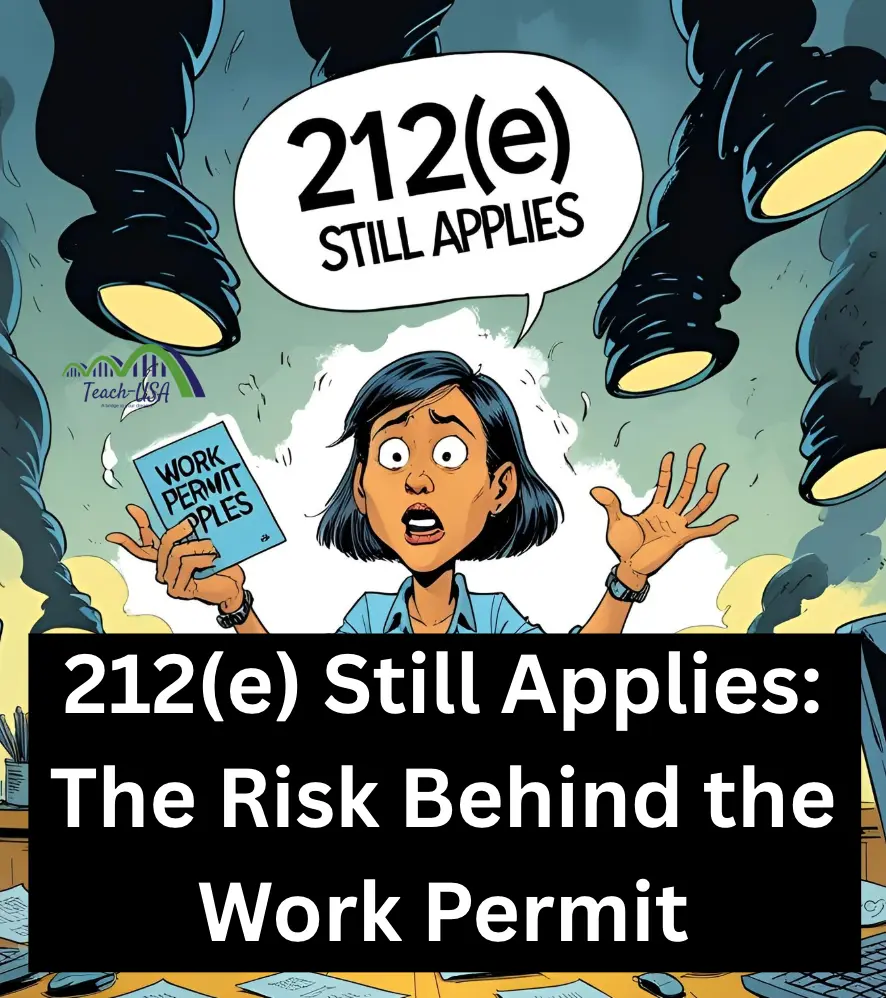You Filed Your Petition. You Got a Work Permit. But Did You Forget the 212(e)?
For many J-1 teachers, the dream is clear:
“Let me stay in the U.S. and continue building this life I’ve started.”
So when you file for a green card—through EB-1 or EB-2 National Interest Waiver (NIW)—and you receive a work permit (EAD), it feels like a win. A sign. A breath of relief. Maybe even a silent prayer answered.
But behind that relief is a risk too many overlook.
What Is the 212(e) Rule—and Why It Still Matters
If you’re a J-1 visa holder subject to the two-year home residency requirement (212(e)), you are required to:
- Return to your home country for a cumulative two years, OR
- Obtain a J-1 waiver before applying to adjust status (green card) inside the U.S.
Here’s the key:
Even if your I-140 petition is approved, even if USCIS issues you a work permit, you still cannot adjust status (I-485) without first resolving the 212(e) rule.
Why Does USCIS Issue Work Permits Then?
It happens more often than you’d think.
You submit your I-140 and I-485. USCIS processes your EAD request. You get your work permit in the mail.
But here’s the hard truth:
An EAD is not a green card.
It’s not a waiver. It’s not legal permanent residency. And it doesn’t “cancel” 212(e).
In fact, some EADs are issued mistakenly—and when USCIS later reviews your file more closely, the entire case can be denied if the 212(e) issue hasn’t been resolved.
And here’s what you must know: Even if your EAD is valid for up to 5 years, it becomes invalid immediately if your I-485 is denied.
So What Happens Next?
Let’s look at both paths:
❌ If Your Case Is Denied:
- You do not get a green card.
- Your work permit becomes invalid.
- You may be placed in removal proceedings.
- You’ll still need to go home or apply for a waiver.
✅ If Your Case Is Approved:
- You’ll still need to either go home for 2 years or
- Have an approved J-1 waiver before you can receive your green card.
Even after all the waiting, paperwork, and hope — the 212(e) rule still stands.
What You Can Do Instead
If you’re in this situation (or about to be), here are your options:
- Apply for a J-1 waiver early — especially if you’re married to a U.S. citizen or have hardship grounds.
- Plan for consular processing — finish your home residency, then come back once your green card is approved abroad.
- File EB-1 or EB-2 now, but wait to adjust status until 212(e) is resolved.
Buying Time or Betting the Future?
Many J-1 teachers feel like they’re running out of time, especially in the last year of their program. Filing a green card petition feels like progress. Getting a work permit feels like a door opening.
But make no mistake — if you’re still subject to 212(e), that door may not fully open.
So ask yourself:
🕰 Are you buying yourself time?
Or are you unknowingly betting your entire future in the U.S.?
You deserve to stay—but do it the right way.
Get legal guidance. Understand your status. Don’t skip the hard part just to feel safe today.
Because one day, your approval will come.
And when it does—you want to be ready to receive it without looking over your shoulder.
Need help: Email apply@teach-usa.net, let’s get you in the right direction.
Disclaimer:
This article is for informational purposes only and does not constitute legal advice. Immigration cases—especially those involving the J-1 212(e) rule, green card petitions, and adjustment of status—can be complex and vary based on individual circumstances. Readers are strongly encouraged to consult a licensed U.S. immigration attorney to assess their specific situation and determine the best course of action.

